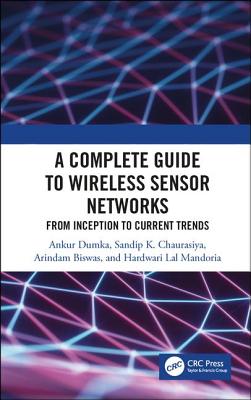The Voice in the Machine: Building Computers That Understand Speech (Hardcover)
暫譯: 機器中的聲音:構建能理解語音的電腦 (精裝版)
Roberto Pieraccini
- 出版商: MIT
- 出版日期: 2012-03-23
- 售價: $1,480
- 貴賓價: 9.5 折 $1,406
- 語言: 英文
- 頁數: 360
- 裝訂: Hardcover
- ISBN: 0262016850
- ISBN-13: 9780262016858
-
相關分類:
語音辨識 Speech-recognition、語音辨識 Speech-recognition
立即出貨 (庫存=1)
買這商品的人也買了...
-
 Peopleware:腦力密集產業的人才管理之道 (Peopleware: Productive Projects and Teams, 2/e)
Peopleware:腦力密集產業的人才管理之道 (Peopleware: Productive Projects and Teams, 2/e)$380$300 -
 精通 Python 3 程式設計, 2/e (Programming in Python 3: A Complete Introduction to the Python Language, 2/e)
精通 Python 3 程式設計, 2/e (Programming in Python 3: A Complete Introduction to the Python Language, 2/e)$680$537 -
TCP/IP 通訊協定, 4/e (TCP/IP Protocol Suite, 4/e)
$860$817 -
 TQC+ AutoCAD 2012 特訓教材-基礎篇
TQC+ AutoCAD 2012 特訓教材-基礎篇$650$514 -
 深入淺出 Python (Head First Python)
深入淺出 Python (Head First Python)$780$616 -
 版本控制使用 Git, 2/e (Version Control with Git: Powerful tools and techniques for collaborative software development, 2/e)
版本控制使用 Git, 2/e (Version Control with Git: Powerful tools and techniques for collaborative software development, 2/e)$580$458 -
 Effective JavaScript 中文版 | 駕馭 JavaScript 的 68 個具體作法 (Effective JavaScript: 68 Specific Ways to Harness the Power of JavaScript)
Effective JavaScript 中文版 | 駕馭 JavaScript 的 68 個具體作法 (Effective JavaScript: 68 Specific Ways to Harness the Power of JavaScript)$450$356 -
 無瑕的程式碼-敏捷軟體開發技巧守則 + 番外篇-專業程式設計師的生存之道 (雙書合購)
無瑕的程式碼-敏捷軟體開發技巧守則 + 番外篇-專業程式設計師的生存之道 (雙書合購)$940$700 -
 Arduino XBee 擴充板
Arduino XBee 擴充板$300$285 -
 DOM 深入精要 (DOM Enlightenment)
DOM 深入精要 (DOM Enlightenment)$480$379 -
 Android App 程式設計教本之無痛起步, 2/e
Android App 程式設計教本之無痛起步, 2/e$480$408 -
 王者歸來-Linux C 系統整合開發設計, 3/e
王者歸來-Linux C 系統整合開發設計, 3/e$880$748 -
 超圖解 Arduino 互動設計入門, 2/e
超圖解 Arduino 互動設計入門, 2/e$680$578 -
 從車庫的舊 PC 到百萬台伺服器-巨型網站成長從無到無限大,技術架構大揭祕-最棒的「秒殺」網站設計實例
從車庫的舊 PC 到百萬台伺服器-巨型網站成長從無到無限大,技術架構大揭祕-最棒的「秒殺」網站設計實例$480$408 -
 Java SE 8 技術手冊
Java SE 8 技術手冊$620$490 -
 深入淺出 Node.js
深入淺出 Node.js$560$437 -
 Responsive Web Design 自動調適型網頁程式設計-讓網頁在電腦 / 平板 / 手機完美展現
Responsive Web Design 自動調適型網頁程式設計-讓網頁在電腦 / 平板 / 手機完美展現$360$306 -
 程式設計人應該知道的 97 件事 | 來自專家的集體智慧 (97 Things Every Programmer Should Know: Collective Wisdom from the Experts)
程式設計人應該知道的 97 件事 | 來自專家的集體智慧 (97 Things Every Programmer Should Know: Collective Wisdom from the Experts)$400$316 -
 高品質程式 | 軟體測試原則、實作與模式 (Quality Code: Software Testing Principles, Practices, and Patterns)
高品質程式 | 軟體測試原則、實作與模式 (Quality Code: Software Testing Principles, Practices, and Patterns)$480$379 -
 啊哈!圖解演算法必學基礎
啊哈!圖解演算法必學基礎$350$298 -
 Node.js 實戰手冊 (Node.js in Action)
Node.js 實戰手冊 (Node.js in Action)$520$411 -
 Android 程式設計入門、應用到精通--增訂第三版 (適用 5.X~1.X, Android Wear 穿戴式裝置)
Android 程式設計入門、應用到精通--增訂第三版 (適用 5.X~1.X, Android Wear 穿戴式裝置)$560$442 -
 AngularJS 建置與執行 (AngularJS: Up and Running: Enhanced Productivity with Structured Web Apps)
AngularJS 建置與執行 (AngularJS: Up and Running: Enhanced Productivity with Structured Web Apps)$520$411 -
 提升 iOS 8 App 程式設計進階實力的 30 項關鍵技巧-最新 Swift 開發教學(Intermediate iOS Programming with Swift)
提升 iOS 8 App 程式設計進階實力的 30 項關鍵技巧-最新 Swift 開發教學(Intermediate iOS Programming with Swift)$590$460 -
 JavaScript 函數活用範例速查辭典 (jQuery & HTML5 應用)
JavaScript 函數活用範例速查辭典 (jQuery & HTML5 應用)$620$484
商品描述
Stanley Kubrick's 1968 film 2001: A Space Odyssey famously featured HAL, a computer with the ability to hold lengthy conversations with his fellow space travelers. More than forty years later, we have advanced computer technology that Kubrick never imagined, but we do not have computers that talk and understand speech as HAL did. Is it a failure of our technology that we have not gotten much further than an automated voice that tells us to "say or press 1"? Or is there something fundamental in human language and speech that we do not yet understand deeply enough to be able to replicate in a computer? In The Voice in the Machine, Roberto Pieraccini examines six decades of work in science and technology to develop computers that can interact with humans using speech and the industry that has arisen around the quest for these technologies. He shows that although the computers today that understand speech may not have HAL's capacity for conversation, they have capabilities that make them usable in many applications today and are on a fast track of improvement and innovation. Pieraccini describes the evolution of speech recognition and speech understanding processes from waveform methods to artificial intelligence approaches to statistical learning and modeling of human speech based on a rigorous mathematical model--specifically, Hidden Markov Models (HMM). He details the development of dialog systems, the ability to produce speech, and the process of bringing talking machines to the market. Finally, he asks a question that only the future can answer: will we end up with HAL-like computers or something completely unexpected?
商品描述(中文翻譯)
史丹利·庫布里克(Stanley Kubrick)於1968年拍攝的電影《2001:太空漫遊》(2001: A Space Odyssey)中,著名地展示了HAL,一個能夠與太空旅行者進行長時間對話的電腦。四十多年後,我們的電腦技術已經進步到庫布里克當時無法想像的程度,但我們仍然沒有能像HAL那樣進行對話和理解語音的電腦。這是否是我們技術的失敗,因為我們還沒有比告訴我們「說或按1」的自動語音更進一步?還是人類語言和語音中有某些根本性的東西,我們尚未深入理解,以至於無法在電腦中複製?在《機器中的聲音》(The Voice in the Machine)一書中,羅伯托·皮耶拉奇尼(Roberto Pieraccini)檢視了六十年來在科學和技術領域的工作,旨在開發能夠使用語音與人類互動的電腦,以及圍繞這些技術追求而產生的產業。他展示了,儘管今天理解語音的電腦可能沒有HAL那樣的對話能力,但它們具備的功能使其在許多應用中可用,並且正在快速改進和創新。皮耶拉奇尼描述了語音識別和語音理解過程的演變,從波形方法到人工智慧方法,再到基於嚴謹數學模型的統計學習和人類語音建模——特別是隱藏馬可夫模型(Hidden Markov Models, HMM)。他詳細說明了對話系統的發展、產生語音的能力,以及將會說話的機器推向市場的過程。最後,他提出了一個只有未來才能回答的問題:我們會得到類似HAL的電腦,還是完全意想不到的東西?






























